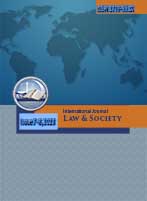Systematization of Criminal Law Policy Spheres and Its Criteria
Keywords:
criminal law policy, systematization, general spheres, special spheres, systematization criteria, interest, criminal lawAbstract
This article addresses the pressing issue of systematizing criminal law policy spheres and determining the criteria for such systematization. The author examines criminal law policy as a component of general state legal policy and crime-fighting policy.
The paper analyzes P.L. Fris’s approach, which suggests using interest as a unifying element for structuring legal policy. The author also considers I.V. Kozych’s proposal to divide criminal law policy into general criminal and special spheres, based on the traditional division of criminal law into General and Special parts.
Developing this approach, the author proposes a set of additional criteria for distinguishing between general and special spheres of criminal law policy. These include: correspondence to criminal law institutions, level of generalization of legal decisions, generalization of methods and ways of formation and implementation, interrelation of norms, peculiarities of law enforcement, and target orientation.
Each of these criteria is examined in detail from the perspective of its application to general and special spheres of criminal law policy. The author emphasizes that the proposed criteria do not claim to be unique or universal, but reflect the author’s vision formed on the basis of an analysis of specialized literature.
The article has both theoretical and practical significance as it offers a new approach to systematizing criminal law policy spheres. This can contribute to more effective formation and implementation of criminal law policy, as well as improving its coherence and systematicity.
The proposed systematization can help in better structuring the criminal law policy, which in turn can lead to more effective crime prevention and control measures. It also provides a framework for policymakers and legal scholars to analyze and develop criminal law policies in a more systematic and coherent manner.
Furthermore, the article contributes to the ongoing academic discourse on the structure and organization of criminal law policy. By proposing new criteria for systematization, it opens up avenues for further research and debate in this field.
The author’s approach of combining existing theories with new criteria demonstrates a comprehensive understanding of the subject matter and provides a solid foundation for future studies in criminal law policy systematization.


